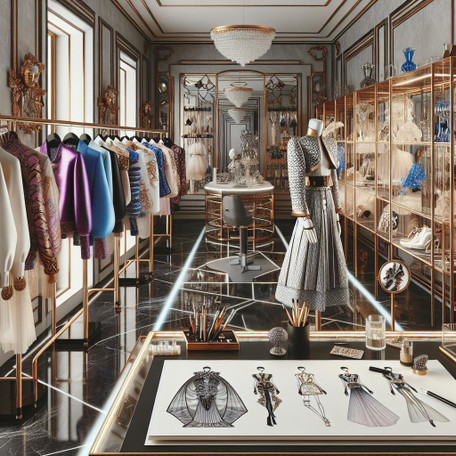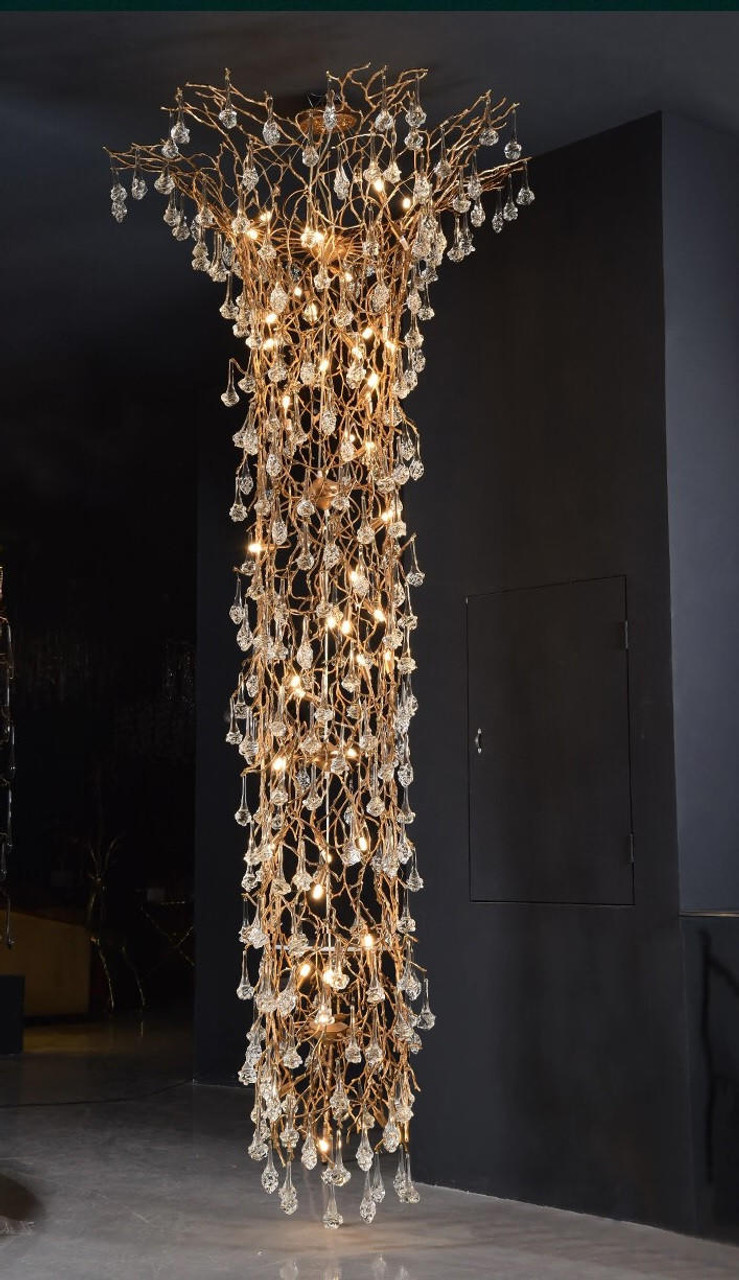House of Versace: How the Iconic Brand Redefined Fashion and Design
Posted by Jessie Meldrew - Fashion Blogger on Oct 20, 2024
Introduction
In the grand tapestry of the fashion world, few houses have woven as vibrant and extravagant a narrative as the House of Versace. Founded on the bedrock of audacity and unparalleled creativity, this iconic brand has revolutionized the world of fashion and design with its fearless approach. Versace is not just a label; it is a manifesto, an emblem of boldness that has turned the conventional into revolutionary. Through its architectural aesthetics and rich cultural amalgamations, the House of Versace has succeeded in redefining what high fashion can be, turning clothing into stories, and runway shows into theatrical spectacles. Moreover, the House of Versace has boldly traversed boundaries of art forms, offering an adventurous exploration into the realms where fashion, art, and architecture converge. The question remains: how did Versace achieve such an iconic status?
The Birth of a Visionary Brand
The House of Versace was born from the visionary mind of Gianni Versace, an Italian designer who transformed his passion for classical art and the baroque opulence of his culture into a language of fashion. Established in 1978, the brand quickly became synonymous with exuberance and luxury. Gianni's designs were distinguished by their brilliant colors, bold prints, and attention to detail. Much like the architectural works that inspire urban planners and designers, Versace’s creations stand as markers of identity and culture, embodying a spirit of liberation and indulgence.
Versace's entry into the fashion industry was nothing short of revolutionary. At a time when minimalism reigned supreme, Gianni introduced a form of maximalism that has since become the hallmark of the brand. The House of Versace embraced the sumptuousness of Greek and Roman antiquities, melding them with a modern sensibility that resulted in garments as timeless as architectural monuments. This approach captivated audiences and brought forth a new era of fashion visualized through the lens of historical reverence and avant-garde expression. Gianni Versace's fascination with art history and his willingness to experiment created a fertile ground for the brand's growth, making it a powerful voice in challenging the norms of aesthetics and taste.
A Symbol of Opulence and Innovation
The House of Versace's commitment to opulence is as much about the quality of materials used as it is about the stories those materials tell. The use of fine silks, luxurious leather, and intricate embellishments are not mere symbols of wealth but are conduits of an expressive narrative. Much like a renowned architect employs space, light, and proportion to craft a narrative in built form, Versace uses textures, colors, and silhouettes to craft stories that resonate on the global stage. Gianni's belief in fashion as a statement of personal and social narrative meant that each collection was a visceral experience, filled with drama and a sense of theatre.
Innovation has remained at the heart of the brand's philosophy. Gianni Versace was a maestro in blending technology with fashion, incorporating novel fabrics and techniques long before it became a trend. This foresight has kept the House of Versace at the cutting edge, allowing it to push the envelope and set trends that the industry continues to emulate. The introduction of metal mesh fabric, for instance, revolutionized fashion by bridging the gap between apparel and ornamentation, much like how innovative materials in architecture transform glass and steel into living entities. Versace's synergy with technological advances kept its offerings dynamic, infusing architectural precision into the fluidity of garments.
Versace's Influence in Popular Culture
No discussion of Versace is complete without acknowledging its profound impact on popular culture. The brand has become intertwined with the glitz and glamor of celebrity, often seen on the most influential figures of our time. With its signature Medusa logo, the House of Versace has permeated the psyche of pop culture as both a status symbol and a representation of bold expression.
Versace’s influence reached its zenith in the 1990s when supermodels like Naomi Campbell, Cindy Crawford, and Linda Evangelista became synonymous with the brand. Versace's runway shows were more than events; they were cultural phenomena that blurred the lines between fashion, art, and celebrity. This relationship with celebrity culture not only propelled the brand to the forefront of fashion but also challenged societal norms by presenting an unapologetic display of sensuality and confidence. The giant steps taken by the House of Versace in embracing celebrity and spectacle continue to leave a lasting imprint on how fashion brands build their identity, merge with culture, and captivate their audience.
The Architectural Parallel
The parallel between the House of Versace and architectural mastery is clear. Much like architecture, which morphs space into an experience, the House of Versace crafts environments through fashion. Each collection is a meticulous narrative that unfolds, a structure built from textile and thread rather than concrete and steel. Gianni Versace’s affinity for historical architecture often surfaced in his collections, where garments echoed the columns of Greece and the arches of Rome in fabrics that draped and moved with the elegance of a classical entity.
The collaboration with renowned architect Luigi Caccia Dominioni to design the Versace headquarters in Milan further amplified this architectural dialogue. The building, much like Versace’s fashion collections, embraced classical influences while presenting modern sophistication. This blend of old and new, traditional and avant-garde, cements the House of Versace’s position not just in fashion, but as a cultural sculptor that shapes the aesthetic sensibilities of its audience. The merger of architecture and fashion within Versace exemplifies how each design, whether a garment or a building, requires spatial intelligence, narrative depth, and a profound understanding of human desire and aspiration.
Enduring Legacy and the Future
Following the untimely demise of Gianni Versace in 1997, his sister, Donatella Versace, took the helm of the House, ensuring that Gianni's legacy not only endured but flourished. Under her artistic direction, the brand has continued to break boundaries, navigating the complex waters of contemporary fashion with the same courage and vision that defined Gianni’s tenure. Donatella’s leadership is marked by a continual embrace of inclusivity and innovation, keeping the brand relevant in a fast-evolving marketplace.
The House of Versace remains a powerful testament to the transformative power of visionary design. It stands as an iconic entity within the fashion industry, echoing the ethos of an artist who shaped how we perceive clothing and identity. Its dedication to pushing boundaries and setting new standards of creativity ensures that the House of Versace is not just a part of fashion history, but an ever-evolving influence that continues to inspire. By venturing into new collaborations and expanding its line into home and lifestyle products, Versace projects an ever-expanding universe that fuses grandeur and innovation, capturing the essence of the era while setting the trajectory for future explorations.
The Versace Experience
The narrative of the House of Versace is one that captures the imagination, stirring emotions and transforming the wearer into a living canvas of art. The embodiment of cultural motifs in its garments lends a voice to the diaspora of artistic traditions across the globe. Versace has the extraordinary ability to manifest its legacy through elegant craftsmanship and provocative designs that transcend the mere function of clothing. The brand today balances its historical roots with the pulse of the modern age, drawing on a rich tapestry of influences that reflect diversity in its collections. It creates an immersive experience where fashion becomes an act of storytelling, a journey from antiquity to the avant-garde.
Conclusion
The House of Versace, like any great architectural landmark, continues to command awe and admiration. It is a brand that has redefined fashion by merging the classical with the contemporary, creating a lexicon that speaks not only to the sartorially inclined but to anyone who appreciates design's limitless potential. In celebrating opulence, audacity, and innovation, Versace has carved out a unique niche that is both intractable and transformative. As the brand looks to the future, the House of Versace remains a beacon of fashion excellence, inspiring generations to embrace the art of bold expression.




